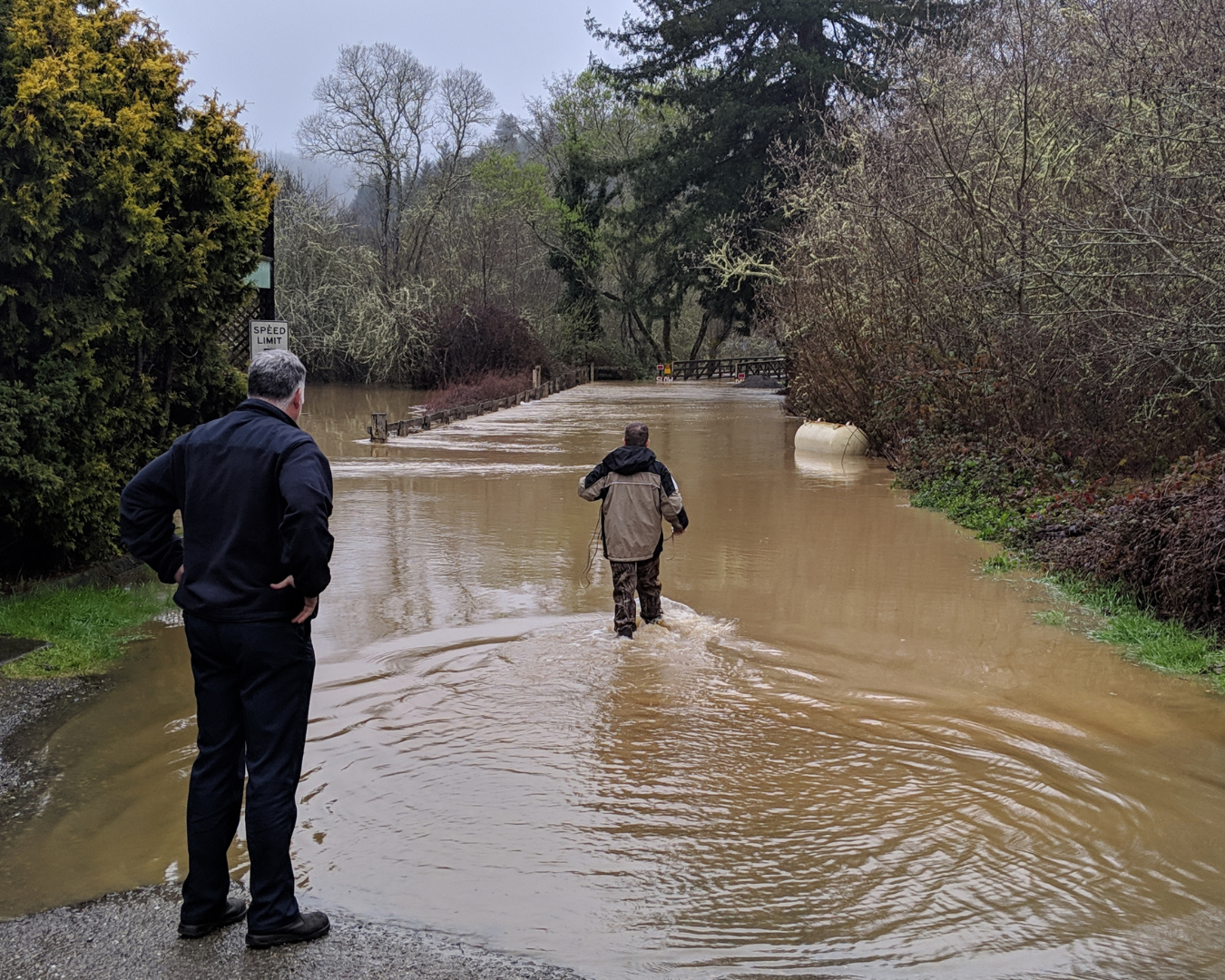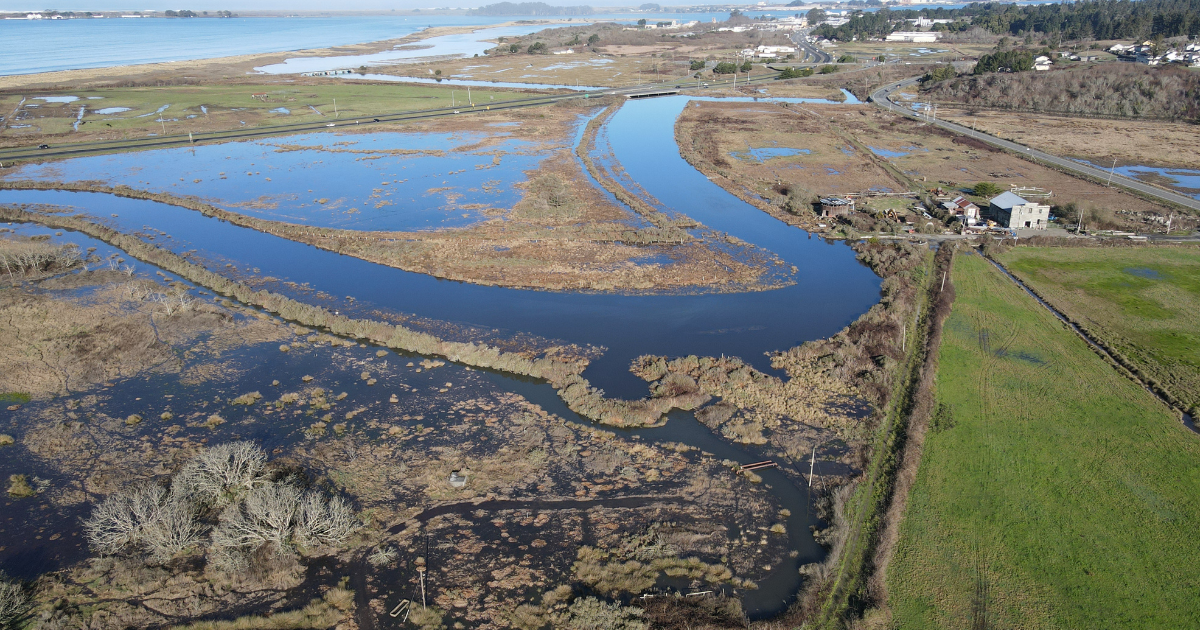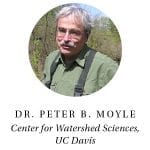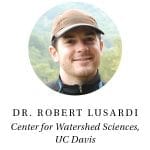CalTrout Acquires Key Elk River Land Parcels, Returns Historic Site to Wiyot Tribe for Cultural Restoration
Collaboration between CalTrout, Wiyot Tribe, and State Agencies Paves the Way for Ecological Restoration and Cultural Healing in Humboldt County
CalTrout, in partnership with the State Coastal Conservancy (SCC), announced today the acquisition of four key parcels of former ranch land (175 acres) along the Elk River in Humboldt County, marking a significant step in the ongoing efforts to protect and restore the Elk River estuary. Three of these parcels will eventually be transferred to the California Department of Fish and Wildlife’s (CDFW) existing Elk River Wildlife Area (ERWA) for continued stewardship and ecological restoration, while the fourth parcel, of special cultural importance to the Wiyot Tribe, was returned to the Tribe for its ancestral ownership.
The Elk River, the largest tributary to Humboldt Bay, supports sustainable local agriculture, is a hub for essential fish habitat, and flows through several residential communities. However, years of intensive land uses for timber harvest and agriculture have caused significant changes across the landscape, shifting the balance away from functional ecosystems and native fish populations. This acquisition and land transfer will drive forward efforts by CalTrout to rebalance this working landscape with expanded tidal marsh and salmon habitat, while simultaneously reducing threats from flooding and sea level rise.


"CalTrout is proud to lead this collaborative restoration effort in the Elk River watershed, which is not only vital to the health of local ecosystems but also to the local communities who live here,” said Darren Mierau, CalTrout's North Coast Regional Director. “We will continue working with our engineering and science team, private landowners, our state agency partners, and the Wiyot Tribe to ensure that this land is restored and stewarded for future generations.”
The parcel returned to the Wiyot Tribe represents a moment of restorative justice for the Tribe, who have lived on and stewarded this landscape since time immemorial. This particular parcel holds immense cultural and historical significance. It is where salmon were traditionally harvested from the river, and it is steeped in rich tribal mythology. The Wiyot Tribe has preserved the name "Chwanuchguk" for this site, underscoring its deep connection to the land.
“Chwanuchguk, 'a ridge comes down there,' is a traditional fishing village where Wiyot people lived, harvested food, and smoked fish since time immemorial. Access to the Hikshari’ (Elk) River and fish restoration on the Hikshari’ (Elk) River is of vital importance to the continuation of the Tribe’s cultural practices.” Brian Mead, Tribal Chair of the Wiyot Tribe.
The total cost of the land acquisition was $1.8 million, funded through a grant from the State Coastal Conservancy, and with support from The Conservation Alliance (TCA). This collaboration highlights commitment to preserving the environmental and cultural integrity of the Elk River watershed, while protecting valuable working lands. In addition, project plans include significant upgrades to public access amenities at the existing Elk River Wildlife Area to allow nature study and outdoor recreation opportunities.
“This keystone acquisition launches a longstanding restoration vision for the Elk River made possible through close partnership with CalTrout, the Wiyot Tribe, and California Department of Fish and Wildlife. It will make habitat and agriculturally productive areas more resilient to peak flood events and sea level rise, and it will extend earlier State Coastal Conservancy-funded estuary restoration upstream to support the broader restoration of the entire Elk River watershed,” said Amy Hutzel, Executive Officer of the State Coastal Conservancy.

“The California Department of Fish and Wildlife is proud to recognize the collaboration with private landowners, CalTrout, the Wiyot Tribe, and our local agency partners in the ongoing efforts to conserve and enhance invaluable coastal wetlands and marshlands of Humboldt County’s North Coast,” said Shawn Fresz, CDFW Lands and Wildlife Program Supervisor. “Together we are advancing CDFW’s mission and with this acquisition and addition to the Elk River Wildlife Area we will protect California’s natural resources, restore public lands and increase their resiliency while expanding public lands and access to them for future generations.”
Since 2014, CalTrout and the project engineering and science team from Northern Hydrology and Engineering, Stillwater Sciences, and GHD have worked closely with local residents, agricultural landowners, and state agency partners to develop science-driven, collaborative solutions for the Elk River watershed. CalTrout is spearheading a landscape-scale strategy to address river channel impairment, floodplain restoration, and improve long-term resilience to land-use pressures.







